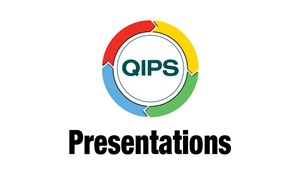
Recap from SA-21
The Quality & Patient Safety Committee partnered with the Quality Improvement & Patient Safety (QIPS) Section to launch the ACEP QI Challenge. The QI Challenge was designed to recognize and spotlight quality improvement and patient safety projects within emergency medicine. The challenge focused on three domains: projects that addressed reducing disparities, projects that encouraged Choosing Wisely initiatives, and projects conducted/led by residents and/or fellows. All submitted projects were evaluated using the Mayo Clinic’s quality project scoring rubric, which is based on the Institute of Medicine Dimensions of Quality. Projects will be loaded to ACEP’s website to serve as a searchable repository for members to replicate quality improvement efforts in their own institutions.
This year, there were three award domains that QI gurus could submit their projects: “Reducing Disparities,” “Choosing Wisely,” and “Resident/Fellow.” Let’s dive in to SA-21’s award winners and congratulate them! If anyone is interested in learning more, please reach out to me (Clint, your friendly newsletter editor) to put you in touch with the local experts.
Reducing Disparities: Providing Post Emergency Care (ProPEr Care) Virtually
Christina Vitto, MD and William Burke Best, MD
VCU Medical Center, Richmond VA
The creative juices flowing out of VCU in the midst of a pandemic really hit home hard at a common issue in post-emergency care: primary care following, particularly in the most vulnerable. This team worked hard in the institution to advocate for their patients and created a [novel?!] program that aimed to provide post emergency department primary care for over 900 patients for chronic disease management. At time of ED discharge, EM providers could choose to refer a patient to a virtual clinic that was staffed by EM clinicians or dual-trained EM/IM clinicians. Patients were contacted through the Doximity App platform via telephone or video conferencing within 7–14 days after ED discharge. The goal was to help provide a bridge while the patient established with a PCP. The team was able to utilize existing hospital resources to help patients establish insurance and chronic / primary care needs.
The majority of patients felt they were seen quickly (88%) and that the virtual visit was more convenient than a traditional in-person visit (94%). 72% felt that ProPEr care prevented them from coming back to the ED for the same reason. The ProPEr care clinic was able to arrange referrals for all the patients who needed specialty care (100%) and provided electronic prescriptions for all the patients who needed refills for their long-term medications (100%).
Choosing Wisely: Better than Benzos: Decreasing Benzodiazepine Use in the Elderly
John Quinn R3, Katrina Stime R3, Alia Church R3, Jahan Fahimi, MD, et al.
UCSF, San Francisco, CA
The team at UCSF jumped head first into managing hyperactive delirium in the agitated elderly patient, for whom chemical sedation was administered. The team met with a multidisciplinary group to determine evidenced-based best practices for managing agitation in the ED (environmental changes, antipsychotic medications, etc.). Using a myriad of QI tools and techniques (Fishbones, and Gap Analysis galore), aggressive educational interventions were implemented aimed at EM physicians and nurses to help facilitate a change in behavior.
As the team studied their work, they found that benzodiazepine administration in elderly patients discharged from the ED improved from 2.4% (138 out of 5770 encounters) in FY2020 to 2.1% (91 out of 4323 encounters) in FY2021, a decrease of 12.5%. Antipsychotic use increased from 1.3% in FY2020 to 1.6% in FY2021, an increase of 23%.
Resident/Fellow: Emergency Medicine Resident Weekly Academic Lecture Review Optimization
Josh Lesko, Daphne Ponce, Vanda Rich
Naval Medical Center, Portsmouth, VA
Feedback is important – it helps us to continuously improve our performance. The team at the Naval Medical Center in Portsmouth recognized that they could do better with their residency lecture feedback performance. The ACGME expects weekly review of lectures through its accreditation process. Using some pretty impressive QI tools, the Portsmouth folks were able to sail into smoother waters by improving their resident response rate for lecture feedback. A process flow map identified non-value added steps, and a new feedback submission system was designed that tracked individual participation. Monthly totals were published to show inter-class participation and publicly identify weak points. Finally, through the power of peer-influence, a gentle email reminder was sent to the entire residency if the overall response rate was at 80% and to a specific class year (come on you senior residents, don’t slack off yet…) if response dipped below 70%. The group found a statistical improvement in their feedback; however, did not meet their lofty goal of 100% participation. Great work Portsmouth!


